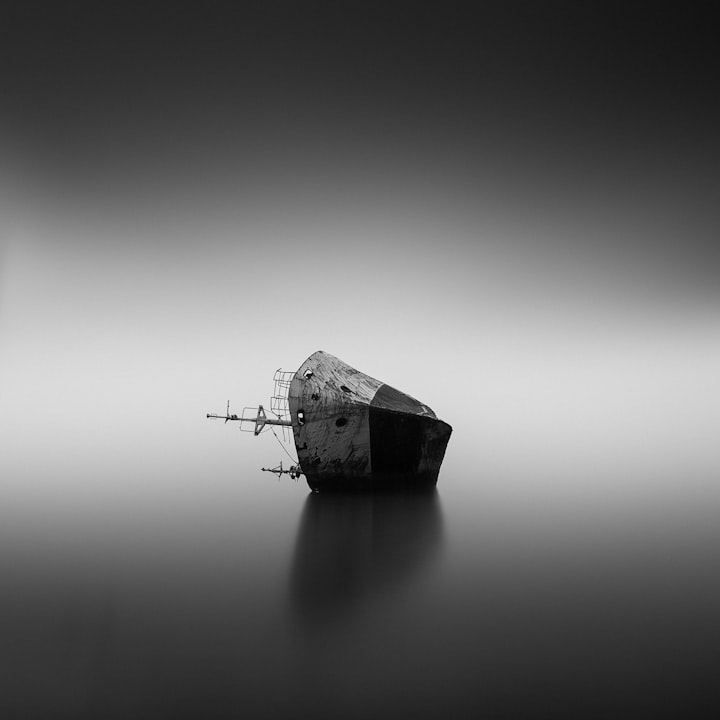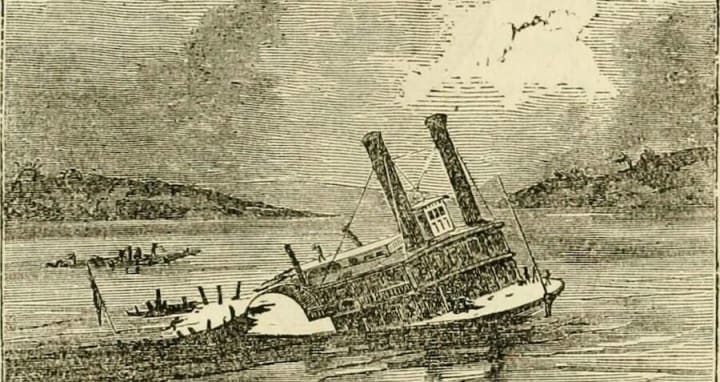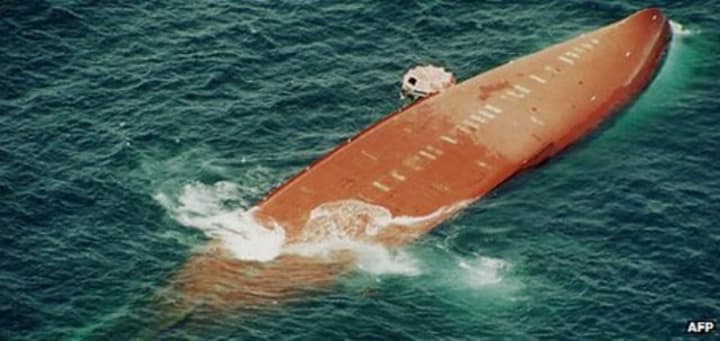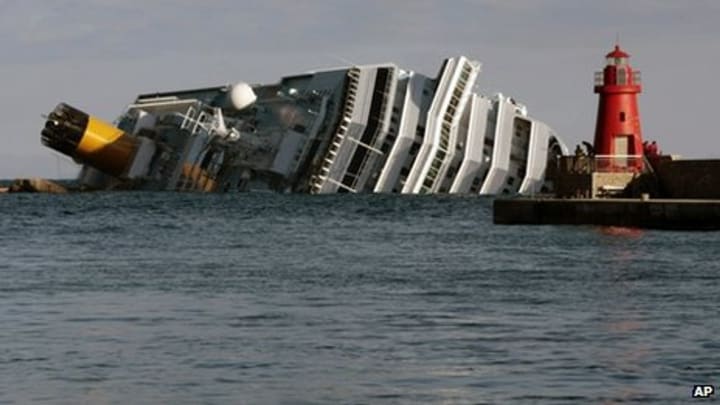
The Titanic disaster gained worldwide fame due to claims of its technological advancement and unsinkable nature. However, the Titanic is not the only large-scale shipwreck, and there have been cases far worse than its tragedy. One such incident occurred on April 27, 1865.
The Sultana

The Sultana Steamboat operated as a daily passenger and cargo vessel between St. Louis and New Orleans. It was a sizable wooden boat with three decks, measuring 260 feet in length and 70 feet in width, nearly twice the size of a basketball court. The ship had a capacity of approximately 350 passengers.
On that unfortunate day, over 2,000 people were on board. On April 23rd, while on a routine voyage from New Orleans, the Sultana experienced a breakdown due to a boiler issue. As a result, the vessel docked in Vicksburg for repairs.
During their stay at the port, Captain James Cass Mason of the ship learned about a lucrative opportunity to transport a large group of former prisoners to the north. Although the boiler required significant repair time, the captain was concerned that competitors might seize the job. To ensure he didn't lose the opportunity, he decided to sail despite the malfunction. Instead of conducting thorough repairs, he patched up the boiler's holes and invited all the ex-prisoners on board.
Consequently, there was a broken boiler, an excessive number of passengers, a shortage of lifeboats, and unfavorable river conditions. Moreover, the captain refused to confine the ex-prisoners separately, mingling them with ordinary passengers. These factors greatly increased the likelihood of a shipwreck, but the captain's insatiable desire for more money prevailed.
The Sultana embarked on its voyage, sailing up the river for two days. However, during this time, one of the most significant floods in Mississippi's history occurred. The river overflowed its banks, causing the water level to rise several feet. The floodwaters submerged all the trees on the shore, leaving only their tops visible. Against this powerful current, the ship continued its journey, putting excessive strain on the already compromised boiler.
On the evening of April 26th, the Sultana reached Memphis, Tennessee, where it loaded an additional 120 tons of sugar and accommodated 200 more passengers. With this added weight, the ship became incredibly heavy. Around midnight, the perilous journey continued as the captain sailed to barges to load a shipment of coal. At 1 am, the vessel left the barge, and by 2 am, the broken boiler, unable to withstand the load, suddenly exploded. The Sultana was merely seven miles north of Memphis at the time.
Only a few individuals survived that fateful day. Many passengers, attempting to escape the fire, jumped into the cold river, which had a strong current. The Sultana disaster is considered the most tragic shipwreck in United States history. The exact number of casualties remains unknown, with different sources estimating it to be between 961 and 1800 people.
It is not surprising that this story is relatively unknown. Despite the presence of more survivors in the Titanic tragedy, which captured widespread attention, the Sultana sank during a high-profile event. Just twelve days before the shipwreck, the nation mourned the loss of Abraham Lincoln. People had not yet recovered from this devastating news, causing the tragedy of the Sultana to receive little attention.
Le Joola

The Senegalese vessel called the Le Joola operated twice a week, mainly sailed along the Dakar coast, transporting passengers engaged in mango and palm oil trade. With the aid of modern rescue equipment and reliable maintenance services, the ferry had successfully completed daily voyages without encountering significant issues.
The crew discovered a malfunction and sent the boat to the port. The Le Joola remained inoperative for nearly a year, awaiting repairs. Unfortunately, the vessel did not receive high-quality service due to poor maintenance. Eventually, the ferry embarked on its final voyage.
On September 26, 2002, the Le Joola set sail between Southern Senegal and Dakar, heading towards Gambia. At 11 pm, a powerful storm arose, causing strong winds and high waves. While this situation would not typically pose a critical threat to a large passenger ship, the number of individuals on board that day exceeded the established limit.
The Le Joola was designed to accommodate around 500 passengers, but it had a significantly higher number on that fateful day. The combination of excessive passengers, subpar repairs, and the severe storm resulted in substantial problems for the ship.
However, the primary factor contributing to the shipwreck was that the Le Joola was only suitable for coastal navigation. On that day, it sailed far from the shore, subjecting itself to massive waves that ultimately capsized the vessel. The ship's deck submerged while its lower parts remained visible above the water, resembling an iceberg. Passengers who were inside the cabins were thrown onto the ceiling, disoriented in space.
Although there were no holes or damages in the ship's hull, water flooded the lower decks. The vessel remained in a twisted position for several hours until it eventually began to sink when water permeated the deck and hold.
Despite the warm ocean waters, no rescue efforts were made to save the passengers, leaving them stranded for almost four days. Tragically, only a few individuals managed to survive this devastating ordeal.
Dona Paz

The sinking of the Philippine passenger ferry Dona Paz in 1987 and the collision involving the passenger ship Arctic in 1854, were indeed tragic maritime disasters. Such incidents serve as reminders of the dangers and risks associated with navigation and the importance of safety measures at sea.
The Philippines, with its numerous islands and shallow waters, can pose challenges for ship navigation. Reefs, shallow areas, and hazards can present risks to vessels, and there have been instances of ships running aground or colliding with submerged obstacles. However, it is important to note that while there have been maritime incidents in the Philippines and its surrounding waters, the majority of ship journeys in the region are completed safely.
The Dona Paz tragedy in 1987 was one of the deadliest peacetime maritime disasters in history. The collision with the oil tanker Vector resulted in a fire and the sinking of both vessels. The immediate loss of life was significant, and only a few dozen people survived. It was a devastating event that highlighted the need for improved safety regulations and enforcement in the maritime industry.
Similarly, the collision involving the Arctic and the Vesta in 1854 resulted in a high loss of life. The Arctic sank rapidly after the collision, and despite efforts to launch lifeboats, the survival rate was low. The incident drew significant attention and criticism due to the perceived failure to prioritise the safety of women and children.
While advancements in technology and navigation systems have improved safety at sea, unforeseen emergencies and extreme weather conditions can still pose risks to ships. No system can completely eliminate the possibility of accidents or natural disasters. However, safety regulations, training programs, and technological advancements continue to play important roles in minimizing the occurrence and impact of maritime incidents.
It is crucial for ship operators, crew members, and regulatory bodies to prioritise safety, adhere to regulations, and learn from past tragedies to prevent future accidents and protect the lives of those at sea.
About the Creator
Kay
In The Mysterious Mind Dispatch, I share my love for captivating stories, intriguing facts, and deep psychological insights. Discover the quirky tales that didn't make the headlines as we delve into the enigmatic world together!






Comments
There are no comments for this story
Be the first to respond and start the conversation.